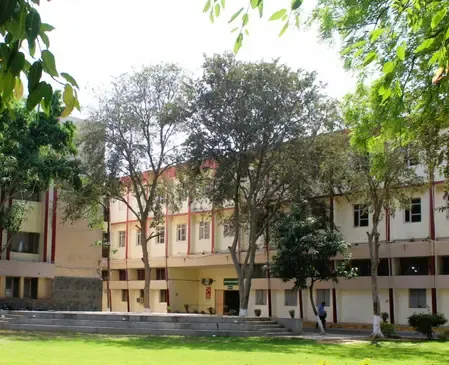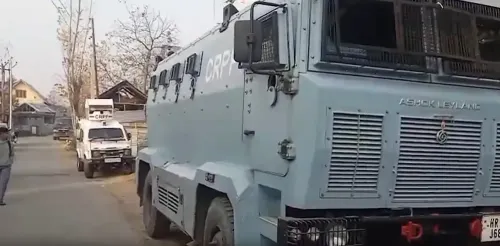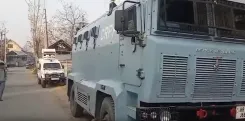What Led to the ED's Raids on Al Falah University?

Synopsis
Key Takeaways
- The ED is investigating Al Falah University for potential links to a terrorist attack.
- Raids commenced on November 18, targeting various locations associated with the university.
- The NIA has arrested key suspects related to the blast.
- Investigators discovered a coded communication system among suspects.
- The arrested doctors have lost their medical licenses and are facing serious charges.
New Delhi, Nov 18 (NationPress) The Enforcement Directorate (ED) has been conducting extensive searches at various locations associated with Al Falah University, its trustees, and other linked individuals and entities in relation to the blast that occurred on November 10 near the Red Fort.
The operations, which began at approximately 5 a.m., include inspections at the university’s central office located in Okhla, Delhi. The ED is currently scrutinizing potential financial and operational connections pertinent to the investigation.
In parallel, the blast investigation is progressing, with the National Investigation Agency (NIA) apprehending the second associate of the suicide bomber. Another significant suspect is anticipated to appear in court later on Tuesday. The founder of Al Falah University, Javed Farooqi, has also been summoned for interrogation by the Crime Branch in Chanakyapuri concerning the same incident.
Continuing its inquiry into the car bomb explosion, a Delhi court on Monday remanded Aamir Rashid Ali, a resident of Kashmir accused of conspiring with Dr. Umar Muhammad Nabi, the alleged suicide bomber responsible for the November 10 attack, to 10 days of NIA custody. Ali was arrested on November 16 during a large-scale operation launched after the NIA took over the case from the Delhi Police. Officials confirmed that the vehicle employed in the assault was registered in Ali’s name.
Initial findings from the NIA indicate that Ali, from Samboora in Pampore, Jammu and Kashmir, conspired with Umar Nabi to carry out the attack. Investigators revealed that Ali traveled to Delhi to assist in procuring the vehicle and subsequently transformed it into a vehicle-borne improvised explosive device (IED) utilized in the explosion.
Later on Monday, the agency detained another crucial associate who allegedly provided technical assistance to the involved terrorists. Jasir Bilal Wani, also known as Danish and a resident of Kashmir, was captured by an NIA team in Srinagar as part of case RC-21/2025/NIA/DLI. According to officials, Wani purportedly aided the group by modifying drones and attempting to create rockets, offering technological support ahead of the devastating car bomb explosion.
Further insights have surfaced regarding the “white-collar” terror cell discovered in Faridabad. A report by NDTV citing investigative sources reveals that the group heavily relied on Telegram, employing an unusual set of food-related code words to obscure their communications.
The four doctors arrested, whose medical licenses have been revoked, utilized names of common dishes as coded references to explosives and planned attacks. Their encrypted conversations indicated that “biryani” referred to explosive materials, while “daawat” signified an imminent operation. Investigators noted that when an IED was prepared, the group would notify one another with the message: “Biryani is ready, get ready for daawat.”
The assembly allegedly comprised Muzamil Shakeel, Dr. Umar Muhammad Nabi, Dr. Shaheen Saeed, and Dr. Adeel Ahmad Rather. Their radicalization is believed to have commenced under Imam Irfan Ahmad from Shopian, identified by investigators as the mastermind behind the operation. Ahmad reportedly first encountered Dr. Umar at a Srinagar hospital in 2020 seeking treatment for his child. This initial encounter led to ongoing communication, which eventually contributed to Dr. Umar’s radicalization.
Once convinced of Dr. Umar’s allegiance, Ahmad directed him to recruit others exhibiting “potential.” The group was subsequently introduced to Jaish-e-Muhammad operatives in south Kashmir, where they received two AK-series assault rifles, both of which have since been recovered, including one from Dr. Shaheen Saeed’s vehicle.
Saeed informed investigators that she met the others about six months prior to the Red Fort explosion and claims she was unaware of the group's actual intentions.
Their names have now been removed from both the Indian Medical Register and the National Medical Register, effectively preventing them from practicing medicine in India.









